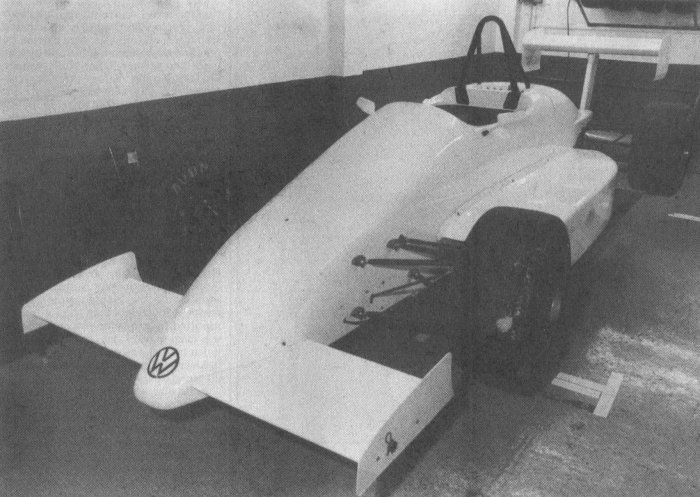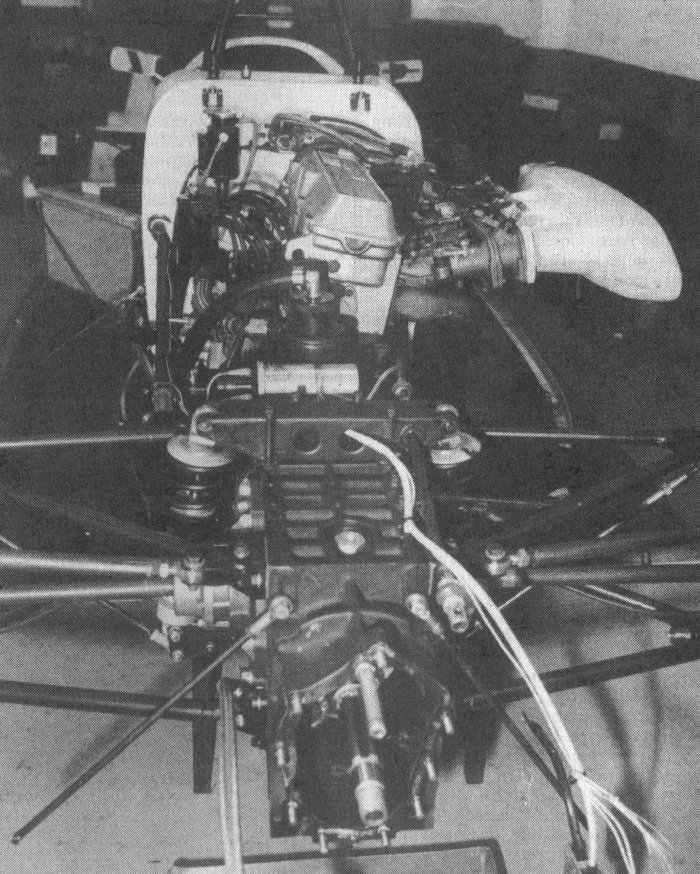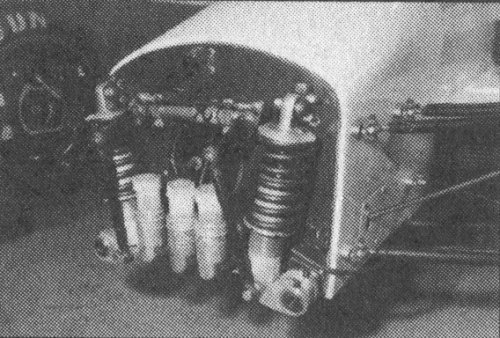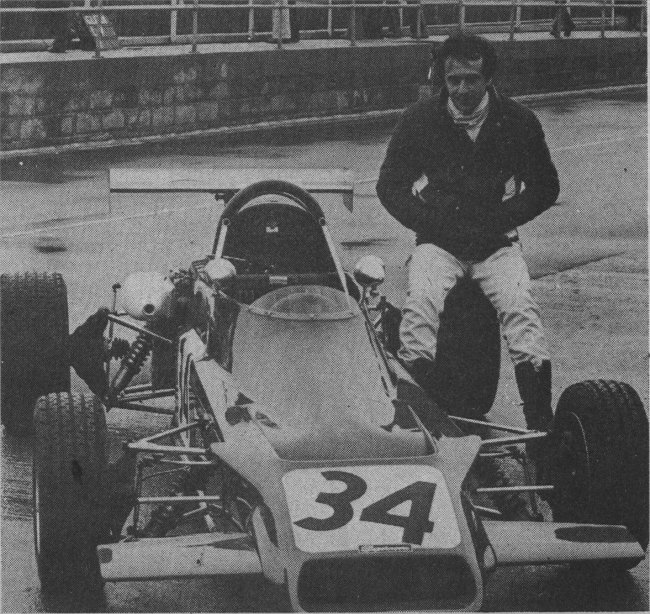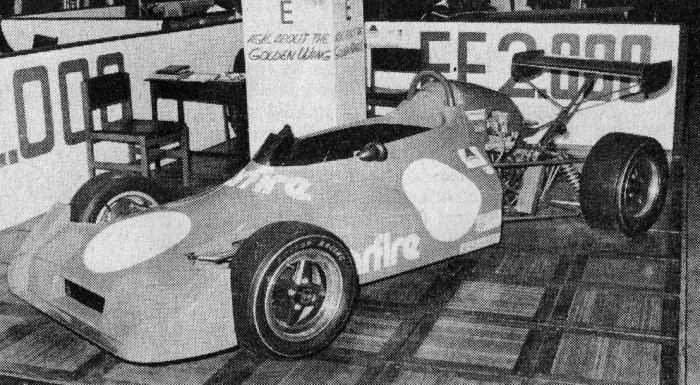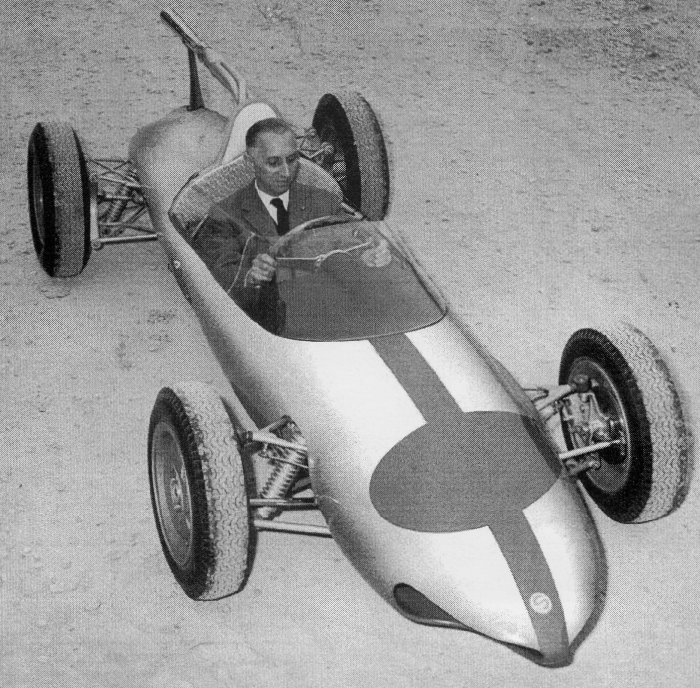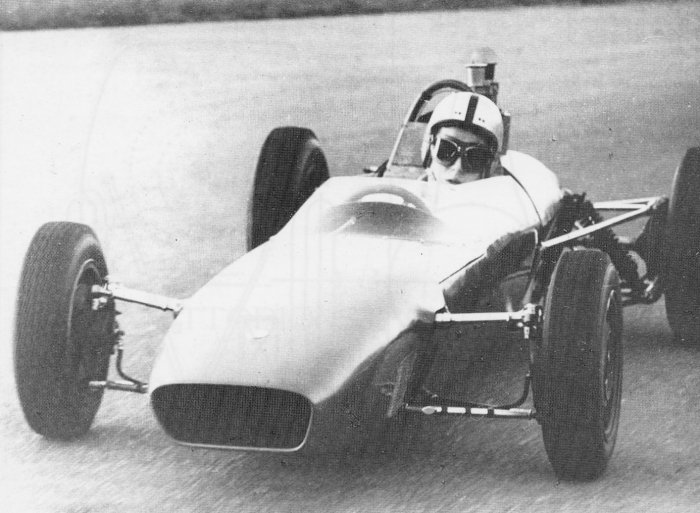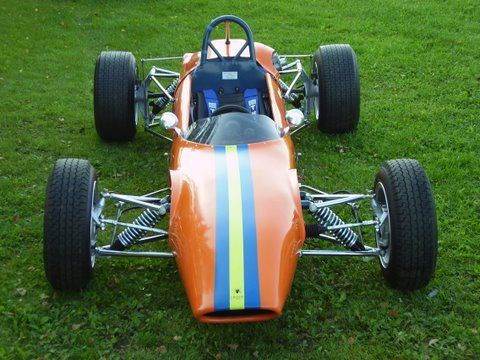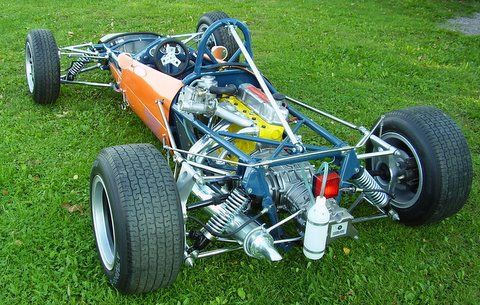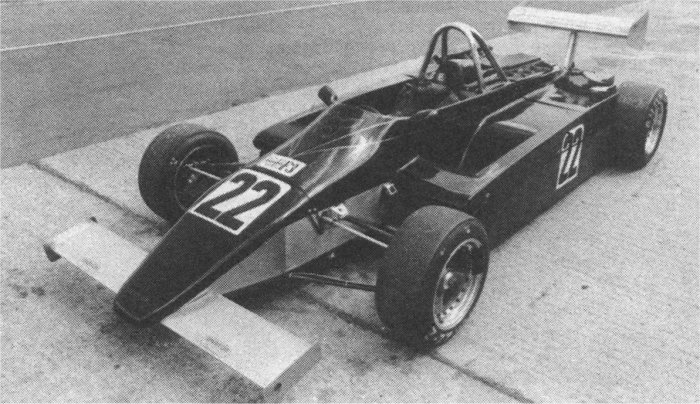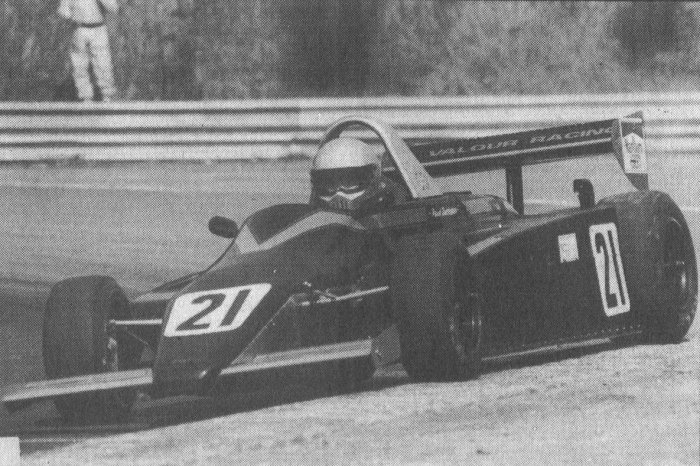Swallow
1987
The front suspension detail.
Unlike its contemporaries Ralt and Reynard who opted for aluminium honeycomb and carbon fibre respectively the 387 used glass composite for its monocoque as Rendall reckoned it the safest in event of an accident. The VW engine was mounted with a 14° tilt to the right (from the rear) to give a lower centre of gravity and lower engine cover for an improved airflow to the rear wing. Unusually a 5-speed Staffs Silent Gearbox was fitted.
Suspension was double wishbone front and rear with pull rods all round. The front dampers were mounted in front of the main tub (see picture) with the rear dampers attached vertically either side of the gearbox. The water radiator and oil cooler were in the left-hand composite sidepod.
Julian Bailey and then Peter Hardman did the initial development before Tim Davies raced the car. Sadly despite Davies best efforts the car clearly wasn’t a match for the massed Ralts and Reynards, traction in particular being a problem, and no points were scored all season. At the end of the year Swallow decided being a constructor wasn’t a viable proposition and they continued in F3 the following year as Reynard customers.
Drivers
1987 Tim Davies.

